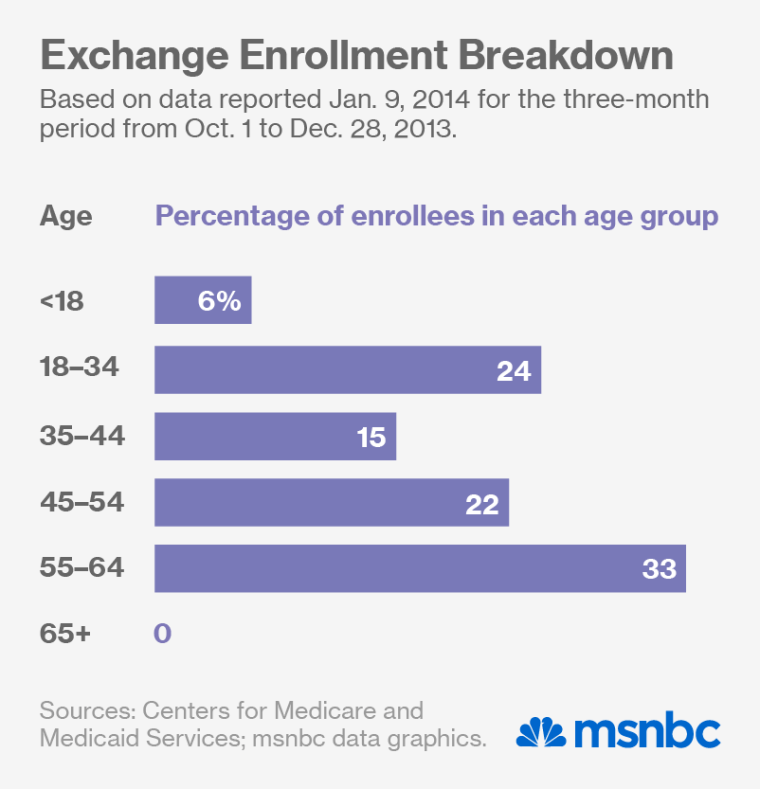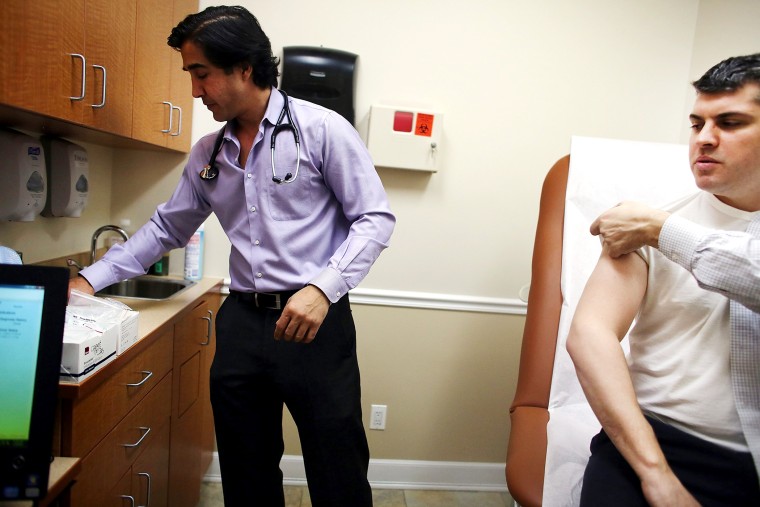The Obamacare rollercoaster took a dip in the headlines Tuesday morning, after the government released its first demographic breakdown of enrollment in the health care exchanges. Enrollment in marketplace plans now tops 2 million, thanks to a December surge in sign-ups, and 4 million have qualified for Medicaid. But as the new report shows, the early enrollees are older as a group than the government and insurance companies are hoping for.
Under the Affordable Care Act, insurance companies can’t penalize people for pre-existing health conditions. That lack of discrimination will raise everyone’s premiums unless the cost of care can be spread across a large population that includes lots of healthy young adults with minimal medical needs.
Ideally people between 18 and 34 years old—who make up 40% of the eligible population—would also make up at least 40% of the insured population. But so far, these so-called young invincibles constitute only a quarter of new enrollees, while people over 55 account for a third.

The right greeted the finding with apocalyptic glee. “There’s no way to spin it: youth enrollment has been a bust so far,” House Speaker John Boehner’s spokesman said in a statement. “When they see that Obamacare offers high costs for limited access to doctors — if the enrollment goes through at all — it’s no surprise that young people aren’t rushing to sign up.”
But the news isn’t all that dire. Though 40% is worthy goal, it’s not a make-or-break benchmark. Calculations by the Kaiser Family Foundation suggest that the health insurance marketplace is sustainable even with the current age breakdown. The health care law still allows insurers to charge older enrollees up to three times more than young ones to offset their higher medical costs. The law also provides subsidies to insurers who happen to attract a surfeit of older, sicker patients. By payments are intended to keep unlucky insurers out of the “death spiral” of rising rates and diminishing enrollment.
It’s also worth remembering that the enrollment period for 2014 is only half over, and that the age mix could change between now and March 31. Avalere Health, a Washington-based health care think tank, notes that it’s common for younger consumers to enroll later. “[We predict] that older and sicker individuals will enroll early in the open enrollment period,” the group said in a statement, “while younger, healthier individuals will sign-up closer to the March 31 deadline.”
